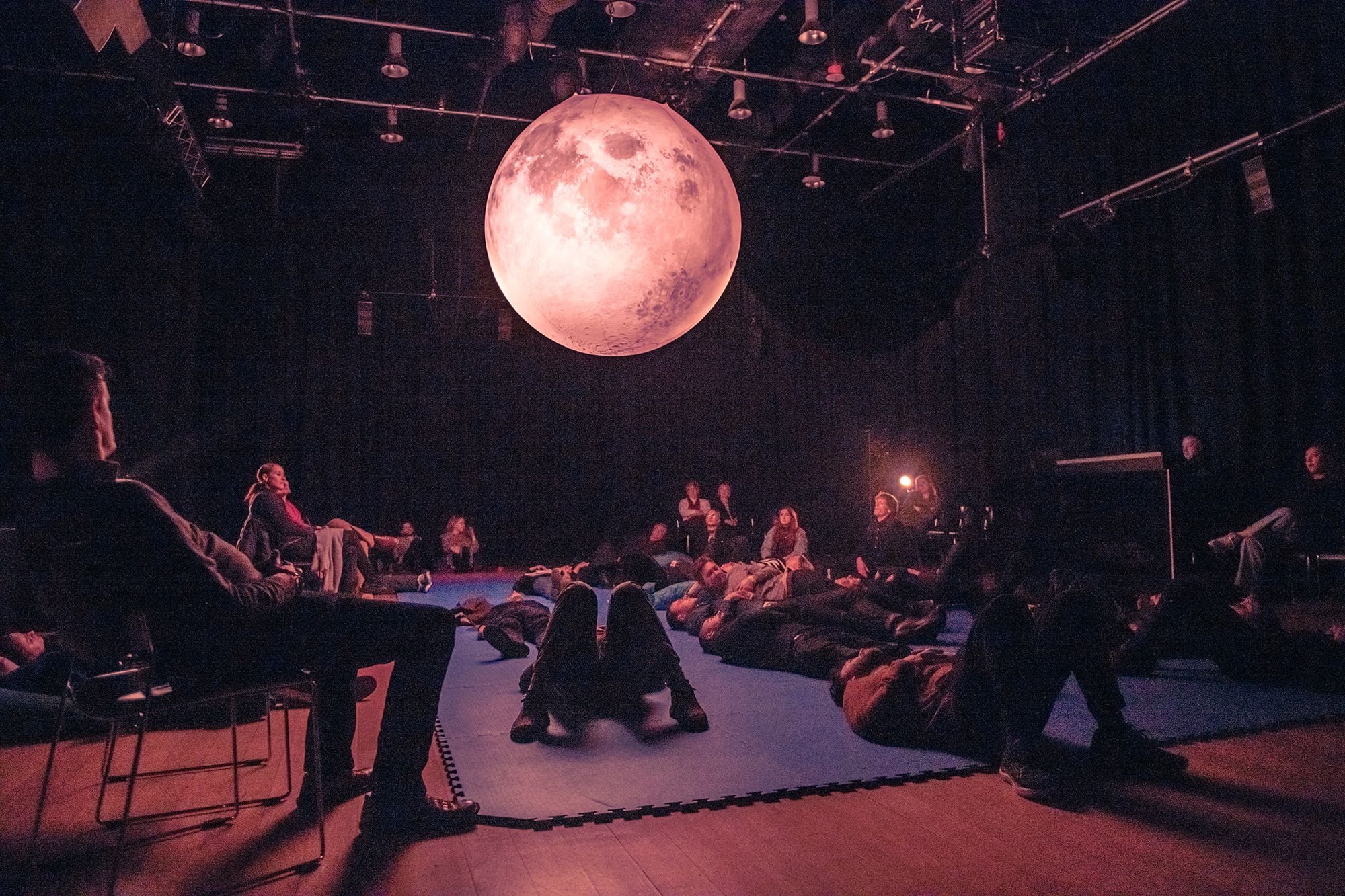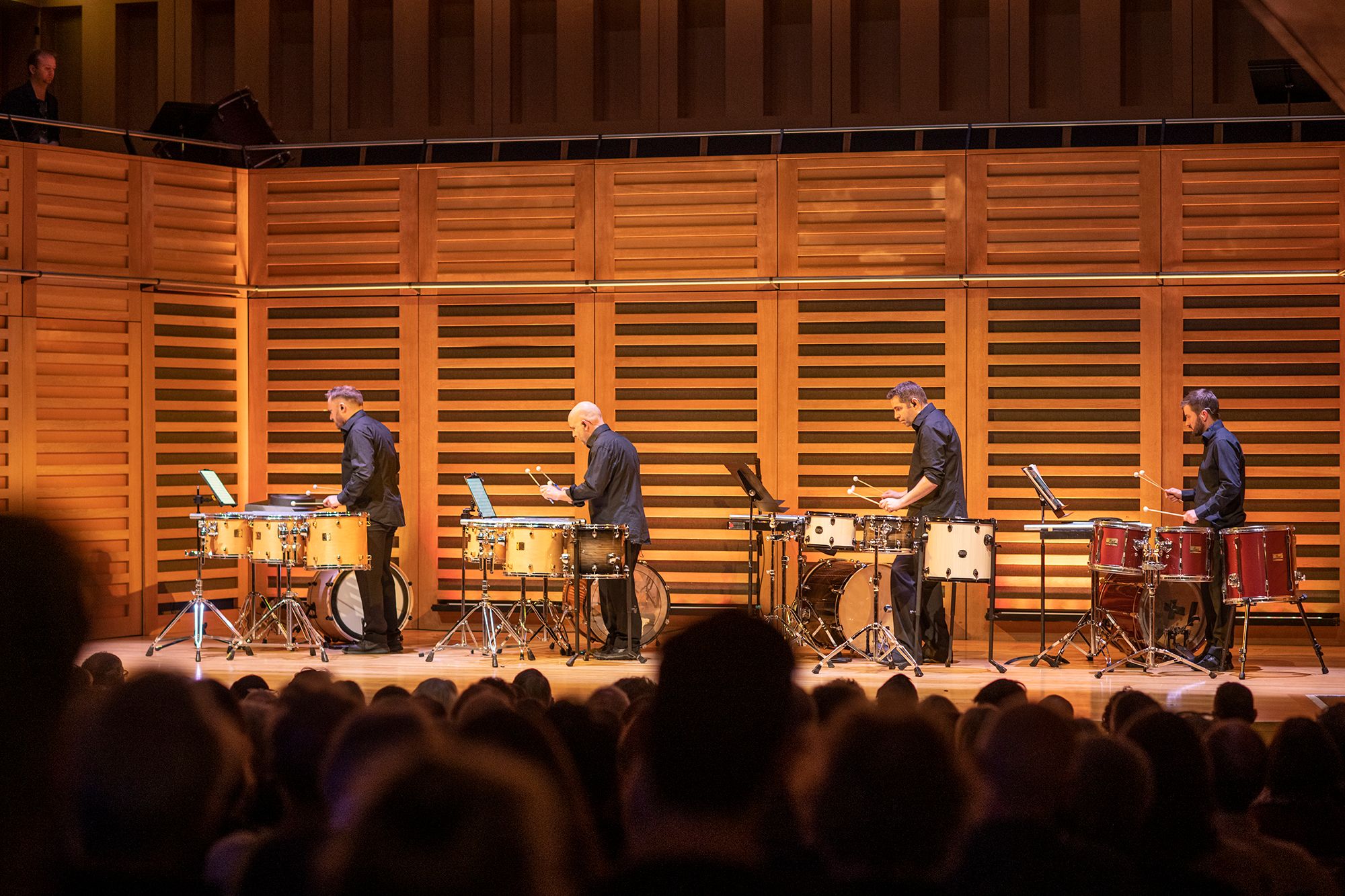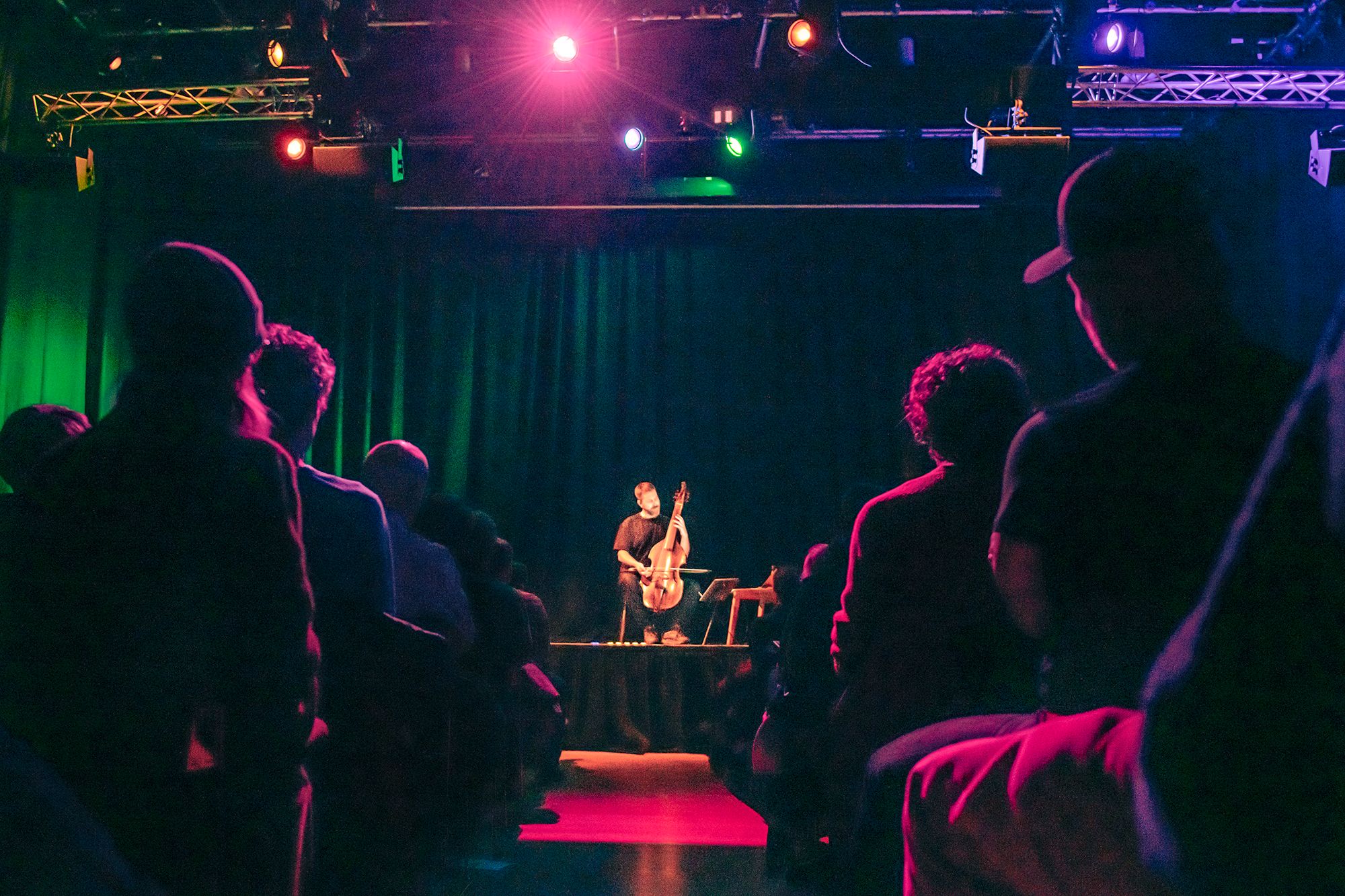The distinctive silvery tones of the viola da gamba were eclipsed in the 18th century as music moved from intimate settings to the brasher acoustic demands of the concert hall. Yet for Liam Byrne, discovering the viola da gamba at Indiana University was a way both of channelling his own musical voice and of connecting to the influential early music movement dating back to figures like Arnold Dolmetsch in the early 20th century.
A collaboration with the Icelandic composer and audio engineer Valgeir Sigurõsson in 2013 introduced him to a form of electronic music making that he realised, paradoxically, allowed him to tune into aspects of the viola da gamba’s more historic performance-style. “A microphone clipped to your bridge changes the way that you play with your instrument… because the microphone there hears everything and the microphone deletes the need for projection,” he told the Strad podcast. As a result he discovered a quieter, more nuanced realm of colour which he demonstrated both in his album Concrete and in Reconstructing Resonance at Kings Place last night.  His concert came at the end of an astonishing evening in which audiences were introduced to the revolutionary new acoustic potential of Kings Place Hall 2. The new 360-degree system, developed by d&b audiotechnik, features 25 separate speakers and 48 channels, allowing different textures of sound to reverberate through the room. This was demonstrated to dramatic effect at the start of the evening in Moonbathing (pictured above), where we lay beneath a large orb and listened to tracks ranging from Rival Consoles’ Pulses of Information to Vanishing Twin’s The Organism. At points the sound seemed to race through the room like a flock of metallic birds, at others subsonic rumbles pulsed through our bodies.
His concert came at the end of an astonishing evening in which audiences were introduced to the revolutionary new acoustic potential of Kings Place Hall 2. The new 360-degree system, developed by d&b audiotechnik, features 25 separate speakers and 48 channels, allowing different textures of sound to reverberate through the room. This was demonstrated to dramatic effect at the start of the evening in Moonbathing (pictured above), where we lay beneath a large orb and listened to tracks ranging from Rival Consoles’ Pulses of Information to Vanishing Twin’s The Organism. At points the sound seemed to race through the room like a flock of metallic birds, at others subsonic rumbles pulsed through our bodies.
Following this, we were ushered into Hall One, where the Colin Currie Quartet (pictured below) demonstrated that you don’t need to rely on technology to get 360-degree sound. In the opening number for wooden frame drums, John Luther Adams’ Qilyaun, the performers stood at all four corners of the auditorium balcony, sending out waves of unruly noise through rolling crescendos and decrescendos. The piece was inspired by the culture of the Iñupiat people of northeast Alaska – at times it felt as if we were caught in a storm swirling round a vast open landscape, while at others a more synchronised regular beat filled the room with a sense of ritual.  It set the tone for a concert that pulled us between intense repetitive sequences that felt almost hallucinatory – as in David Lang’s the so-called laws of nature performed on tuned metal pipes – and the raw fizzing energy of the percussion section from Julia Wolfe’s Dark Full Ride. By the end of the session it felt as if we were not just listening through our ears but through every cell in the body as the vibrations charged and electrified the atmosphere.
It set the tone for a concert that pulled us between intense repetitive sequences that felt almost hallucinatory – as in David Lang’s the so-called laws of nature performed on tuned metal pipes – and the raw fizzing energy of the percussion section from Julia Wolfe’s Dark Full Ride. By the end of the session it felt as if we were not just listening through our ears but through every cell in the body as the vibrations charged and electrified the atmosphere.
So far so stimulating, but after this auditory attack (a clackophony?) we were more than ready for the subtler contemplative tones of the viola da gamba. Back in Hall 2 Byrne opened his concert with the sixteenth century In Nomine by Picforth, a simple stunning work which is the only known piece by this Elizabethan composer. Spotlit against the dark backdrop, he teased out each one of the themes normally played together by five viols. In front of us he recorded each theme live and then layered the music so we heard all five parts together; as they were projected round the hall’s new 360 degree sound system it felt as if we were surrounded by a ghostly consort.
Byrne spent the early part of his professional life with the acclaimed viol consort Fretwork, who as well as producing definitive performances of historic works were the first to commission modern composers to create new pieces for viols. In this concert he presented two of his own collaborations with contemporary composers. The first was Alex Mills’ Suspensions and Solutions. This references the fact that ink particles ultimately stay distinct from water while dye combines with it to create a new colour – a gentle parallel between the ways in which colour and harmony can work.
The opening to the piece was as biting as it was dissonant – as the reverb effects took off it felt as if we were hearing the notes resonate round a large cave. Then Byrne introduced a subtle melody with gently accompanying chords before shifting into brisk sequences ascending the scale; ink drops of sound that dispersed through the reverb into haunting, receding echoes.  The next item on the programme was dispensed with somewhat unexpectedly – Maddalena Casulana’s 16th century madrigal Stavasi il mil bel Sol, which Byrne broadcast to us electronically while he himself sat and had a swig of beer. Following this gently alternative and quite literal amuse bouche, we were into the final part of the evening, drawn from music Byrne initially recorded for a 2015 sound installation at the National Gallery with composer Nico Muhly, Long Phrases for the Wilton Diptych.
The next item on the programme was dispensed with somewhat unexpectedly – Maddalena Casulana’s 16th century madrigal Stavasi il mil bel Sol, which Byrne broadcast to us electronically while he himself sat and had a swig of beer. Following this gently alternative and quite literal amuse bouche, we were into the final part of the evening, drawn from music Byrne initially recorded for a 2015 sound installation at the National Gallery with composer Nico Muhly, Long Phrases for the Wilton Diptych.
The piece, which has now been distilled into a fifteen-minute work, opened with long sustained notes, setting up a sense of profound calm and meditation. Soon, attacks with the bow on the lower strings disrupted the potentially hypnotic effect – and as the piece progressed the complexity of the medieval altarpiece was evoked through alternations between whispering ethereal passages and ravishing dissonances.
It felt like a fitting end to an evening which truly seemed to herald beguiling new opportunities for ways of experiencing classical music. A triumph for Kings Place, not least because the emphasis was as much on thoughtfulness as effect, on the reminder that no matter how hi-tech our surroundings they are worth nothing if they do not also provide insights on what it is to be human.














Add comment